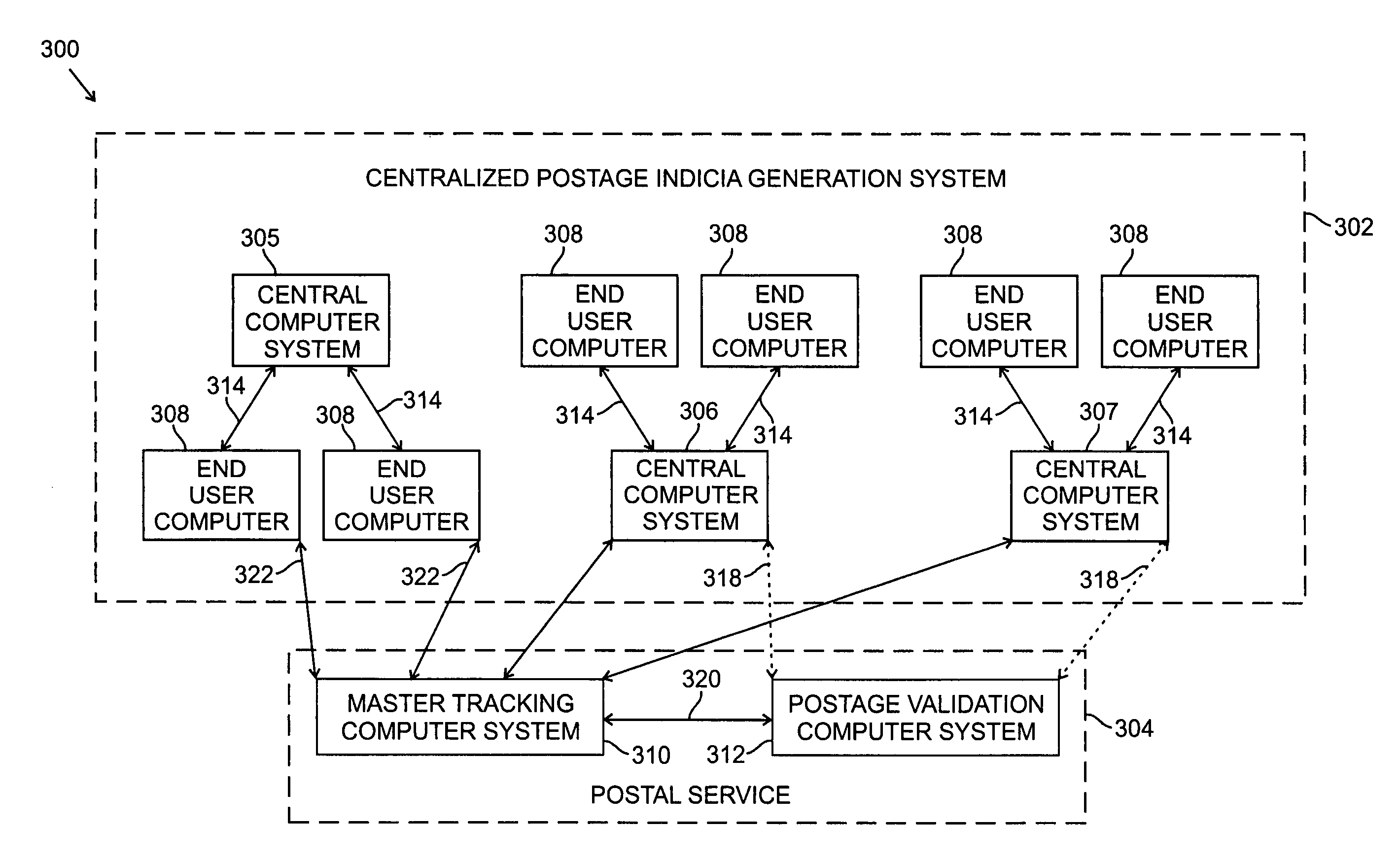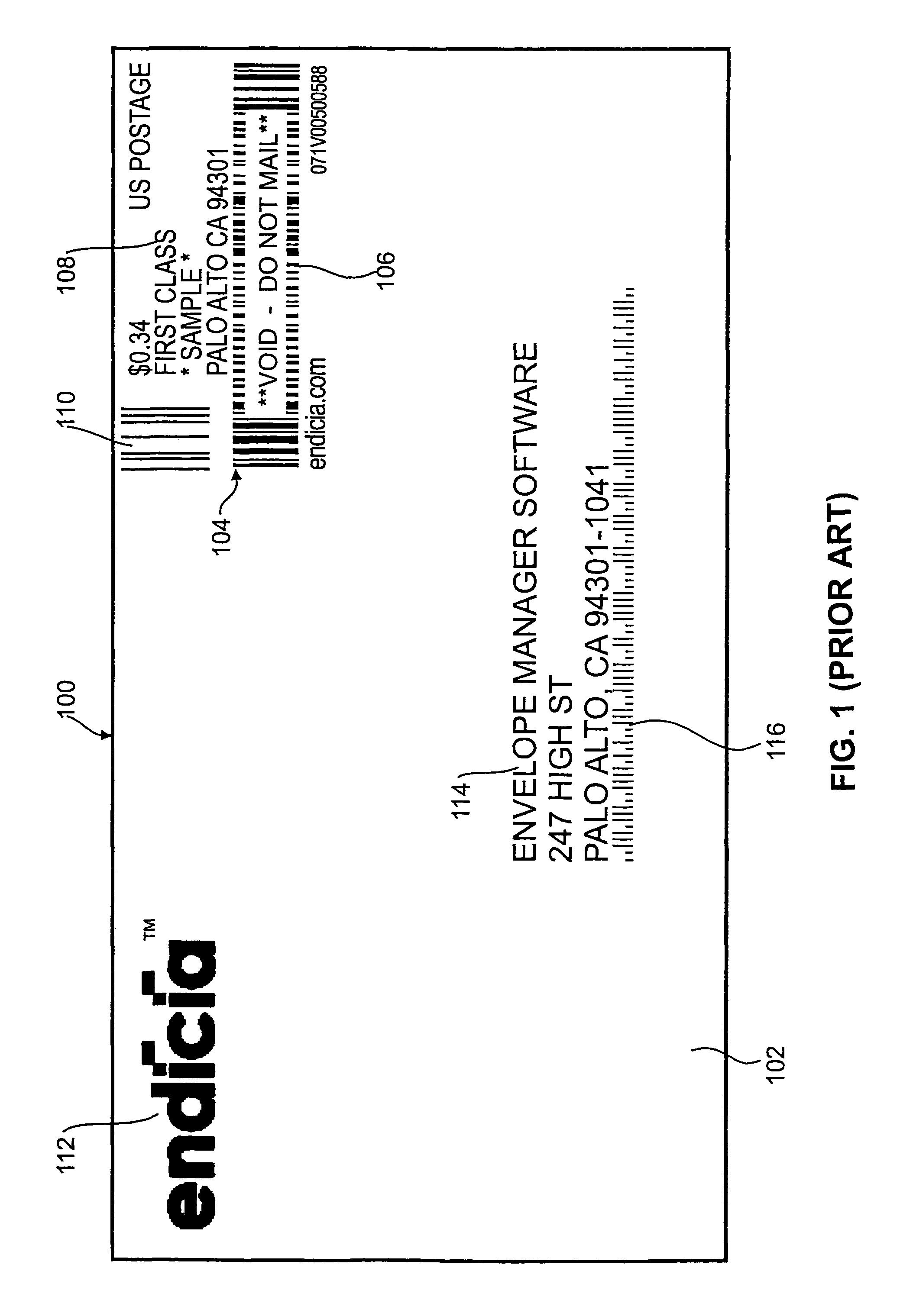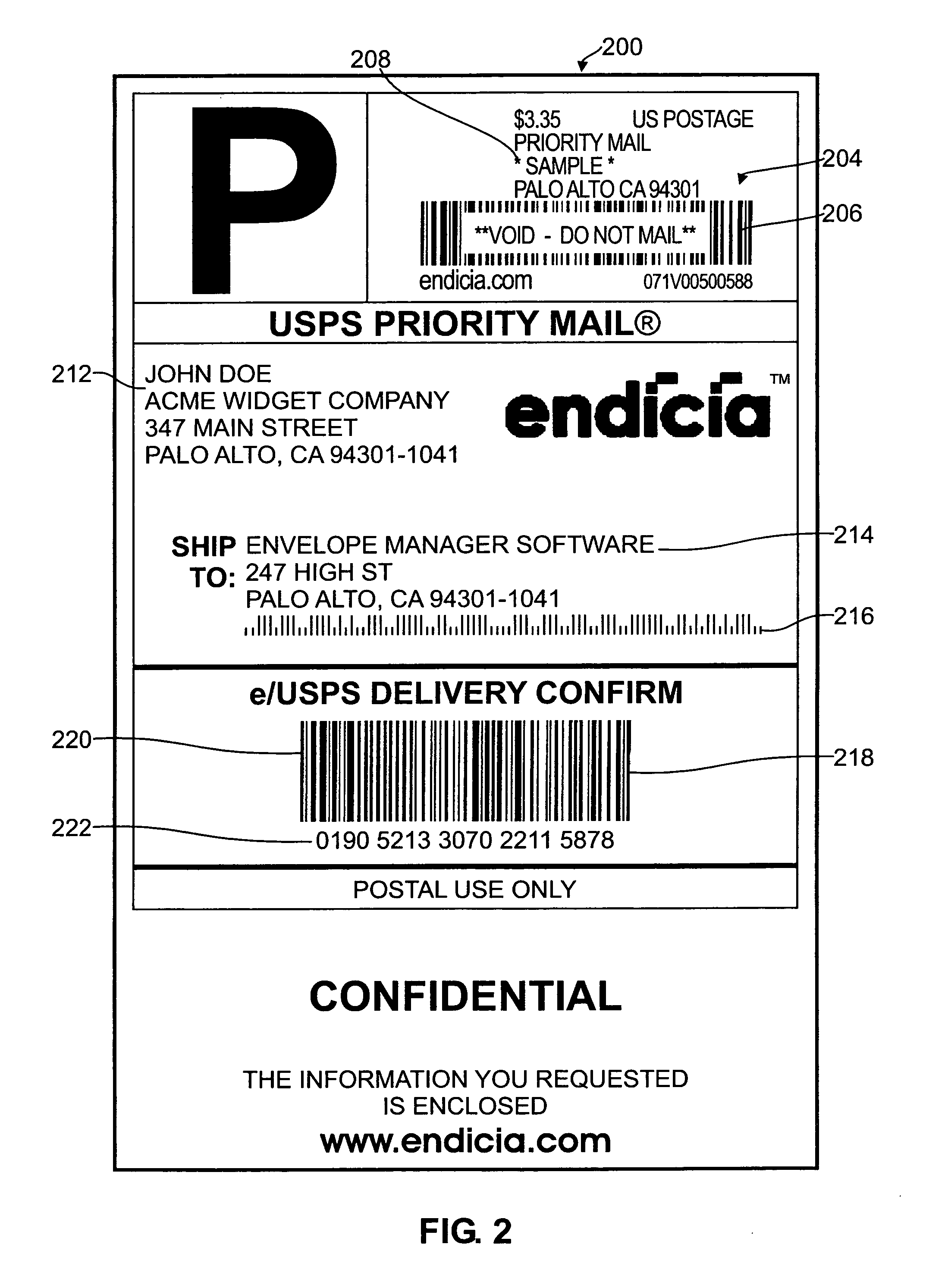Systems and methods for detecting postage fraud using an indexed lookup procedure
a postage fraud and indexing technology, applied in the field of electronic postage metering systems, can solve the problems of stamps.com encountering several financial and legal problems, stamps.com is in disarray, and usps has no detailed knowledge of how the postage is consumed, so as to reduce the size of the postage indicium transmitted and eliminate the transmission of the postage indicium
- Summary
- Abstract
- Description
- Claims
- Application Information
AI Technical Summary
Benefits of technology
Problems solved by technology
Method used
Image
Examples
Embodiment Construction
[0081]The present invention is directed to a postage indicia tracking system for generating self-validating unique postage indicia that can be validated by a postal authority (such as, e.g., the United Stated Postal Service (USPS), United Parcel Service (UPS), Federal Express (FedEx), etc.) for various purposes (such as, e.g., detecting copy fraud, postage counterfeiting, refund facilitation, etc.).
[0082]Referring to FIG. 2, a USPS Priority Mail postage label 200 generated in accordance with the present inventions can be used in a high-postage value transaction (such as, e.g., packages, expedited services, etc.) to detect copy fraud, since such transactions represent the largest fraud threat, and are the mostly likely demographic to embrace PC-Postage. We hasten to add that the present invention does not exclude envelope mail, and there are innovations presented for that arena as well. Nor does it exclude other package shipment services provided by other postal authorities, or by pr...
PUM
 Login to View More
Login to View More Abstract
Description
Claims
Application Information
 Login to View More
Login to View More - R&D
- Intellectual Property
- Life Sciences
- Materials
- Tech Scout
- Unparalleled Data Quality
- Higher Quality Content
- 60% Fewer Hallucinations
Browse by: Latest US Patents, China's latest patents, Technical Efficacy Thesaurus, Application Domain, Technology Topic, Popular Technical Reports.
© 2025 PatSnap. All rights reserved.Legal|Privacy policy|Modern Slavery Act Transparency Statement|Sitemap|About US| Contact US: help@patsnap.com



